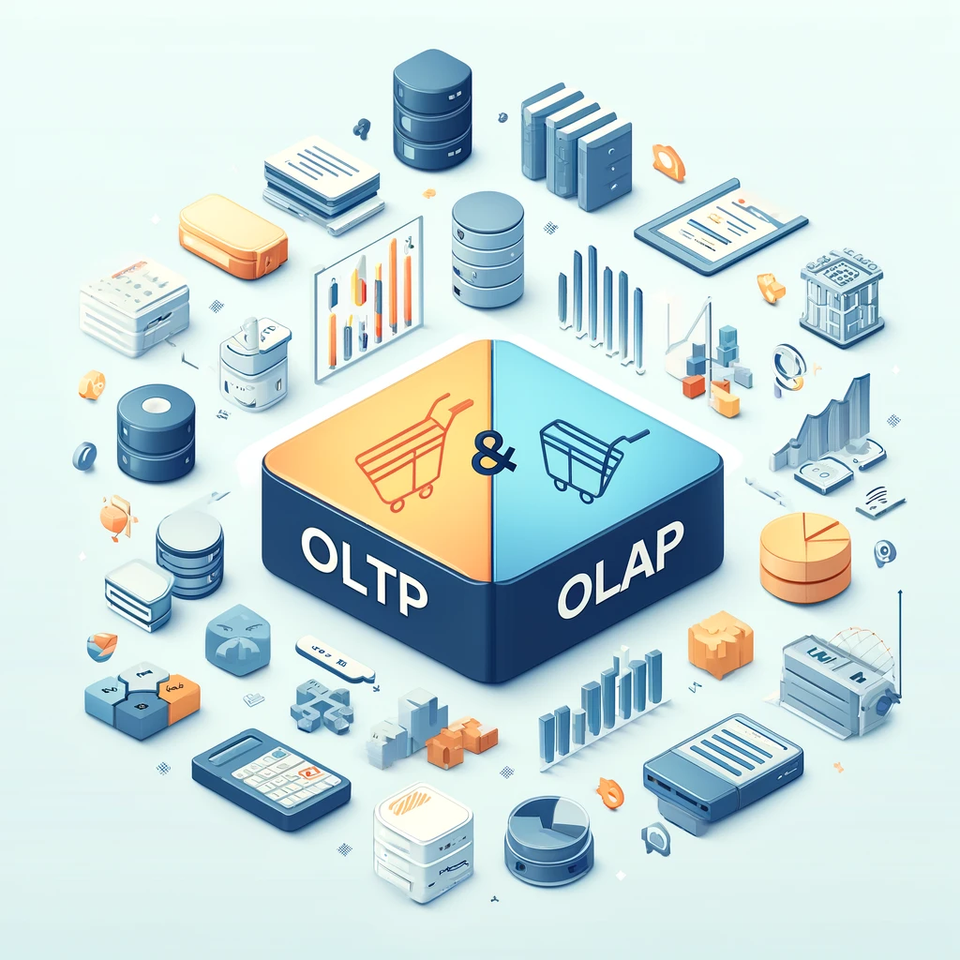Table of Contents
Table of Contents
Introduction
In the realm of data management and analytics, two fundamental concepts play pivotal roles: OLTP (Online Transaction Processing) and OLAP (Online Analytical Processing). Each serves distinct purposes within an organization, catering to different aspects of data handling and decision-making processes.

What is OLTP?
Overview
OLTP, or Online Transaction Processing, is primarily concerned with managing transactional data in real-time. It supports day-to-day operations where numerous transactions occur and require immediate processing. Key characteristics of OLTP systems include:
- Transactional Focus: OLTP systems handle a high volume of short online transactions, such as order processing, banking transactions, or online reservations.
- Concurrent Users: They are designed to support multiple users simultaneously, ensuring efficient and consistent transaction processing.
- Normalized Schema: OLTP databases typically use a normalized database schema to minimize redundancy and ensure data integrity.
- Speed and Availability: Emphasis is placed on speed and availability, ensuring quick response times and minimal downtime.

Figure: Illustration of OLTP showcasing real-time data flow, multiple databases and servers, and secure, high-speed transaction handling.
Use Case: E-commerce Platform
In today’s fast-paced e-commerce environment, real-time order processing is crucial for customer satisfaction and operational efficiency. An e-commerce platform utilizes Online Transaction Processing (OLTP) to manage and process customer orders instantly. This system is designed to handle a high volume of transactions, ensuring that each step of the order process is completed quickly and accurately.
When a customer places an order, the OLTP system springs into action. The first step is to verify the availability of the items in the inventory. This is done through a quick database query that checks the quantity of the product. If the item is in stock, the system proceeds to the next step: processing the payment transaction. This involves securely handling the customer’s payment information and ensuring that the transaction is completed without any issues.
Once the payment is processed, the OLTP system updates the order status. This step is crucial as it provides the customer with real-time information about their purchase, enhancing their shopping experience. The entire process, from inventory check to payment processing and order status update, is completed within seconds.
For example, to verify inventory availability, the system might use a SQL query like:

For processing the payment, a query such as:

is used to ensure the transaction is securely recorded.
Finally, to update the order status, the system might execute:

The use of OLTP in this context provides several benefits. It ensures that orders are processed quickly and accurately, which is essential for maintaining high levels of customer satisfaction. Real-time updates on order status keep customers informed and engaged, while the secure handling of payment transactions protects sensitive information.
What is OLAP?
Overview
OLAP, or Online Analytical Processing, focuses on complex queries and data analysis tasks rather than transaction processing. It involves querying large volumes of historical data to uncover insights and trends for strategic decision-making. Key characteristics of OLAP systems include:
- Analytical Focus: OLAP systems are optimized for complex analytical queries that involve aggregations, calculations, and comparisons across large datasets.
- Data Aggregation: They use multidimensional data models for efficient data aggregation and summarization, supporting trend analysis, forecasting, and business intelligence.
- Denormalized Schema: OLAP databases often use denormalized or star/snowflake schema to optimize query performance and facilitate complex analytical operations.
- Historical Data: OLAP systems store historical data over time, enabling trend analysis and comparisons across different time periods.

Illustration of OLAP depicting multi-dimensional data analysis, data cubes, and analytical tools in a high-tech environment for data-driven decision making.
Use Case: Business Analytics
In a competitive retail environment, understanding sales performance is essential for strategic planning and growth. A retail company leverages Online Analytical Processing (OLAP) to analyze its sales data across different regions and product categories over the past five years. This powerful analytical tool enables the company to gain deep insights into its historical sales data, facilitating informed decision-making.
By using OLAP, the retail company can identify significant trends and patterns in their sales performance. For instance, they can observe how sales have varied across different regions, helping them understand which areas are performing well and which need more attention. Similarly, analyzing sales by product categories allows the company to pinpoint which products are most popular and which might require strategic adjustments, such as pricing changes or targeted marketing campaigns.
Seasonality patterns are another critical insight derived from OLAP analysis. By examining sales data over multiple years, the company can detect seasonal fluctuations and prepare accordingly. For example, they might identify periods of high demand during certain holidays or events, enabling them to optimize inventory levels and staffing to meet anticipated sales spikes.
OLAP also highlights areas for strategic improvement. By comparing historical data, the company can identify underperforming regions or product categories and investigate the underlying causes. This information is invaluable for making data-driven decisions to enhance overall business performance.
Example OLAP queries might include:
- Total Sales by Region and Year

- Quarterly Sales for Electronics

Using OLAP, the retail company can transform vast amounts of sales data into actionable insights. This enables them to stay ahead of the competition by making strategic decisions based on comprehensive data analysis, ultimately driving growth and improving profitability.
Key Differences Between OLTP and OLAP
- Purpose: OLTP focuses on transaction processing and operational efficiency, while OLAP focuses on data analysis and decision support.
- Data Structure: OLTP uses normalized schemas for transactional efficiency, while OLAP often uses denormalized schemas for analytical querying.
- Query Complexity: OLTP handles simple queries for immediate transaction processing, whereas OLAP handles complex queries for data analysis and reporting.
- Usage Scenario: OLTP is used in operational environments where real-time transaction processing is critical, while OLAP is used in decision support and business intelligence contexts.

Conclusion
OLTP and OLAP serve distinct yet complementary roles in modern data management and analytics. Understanding their differences and capabilities is crucial for organizations aiming to leverage data effectively for both operational efficiency and strategic decision-making. For more insights and blogs, visit: http://blog.bravebits.co.